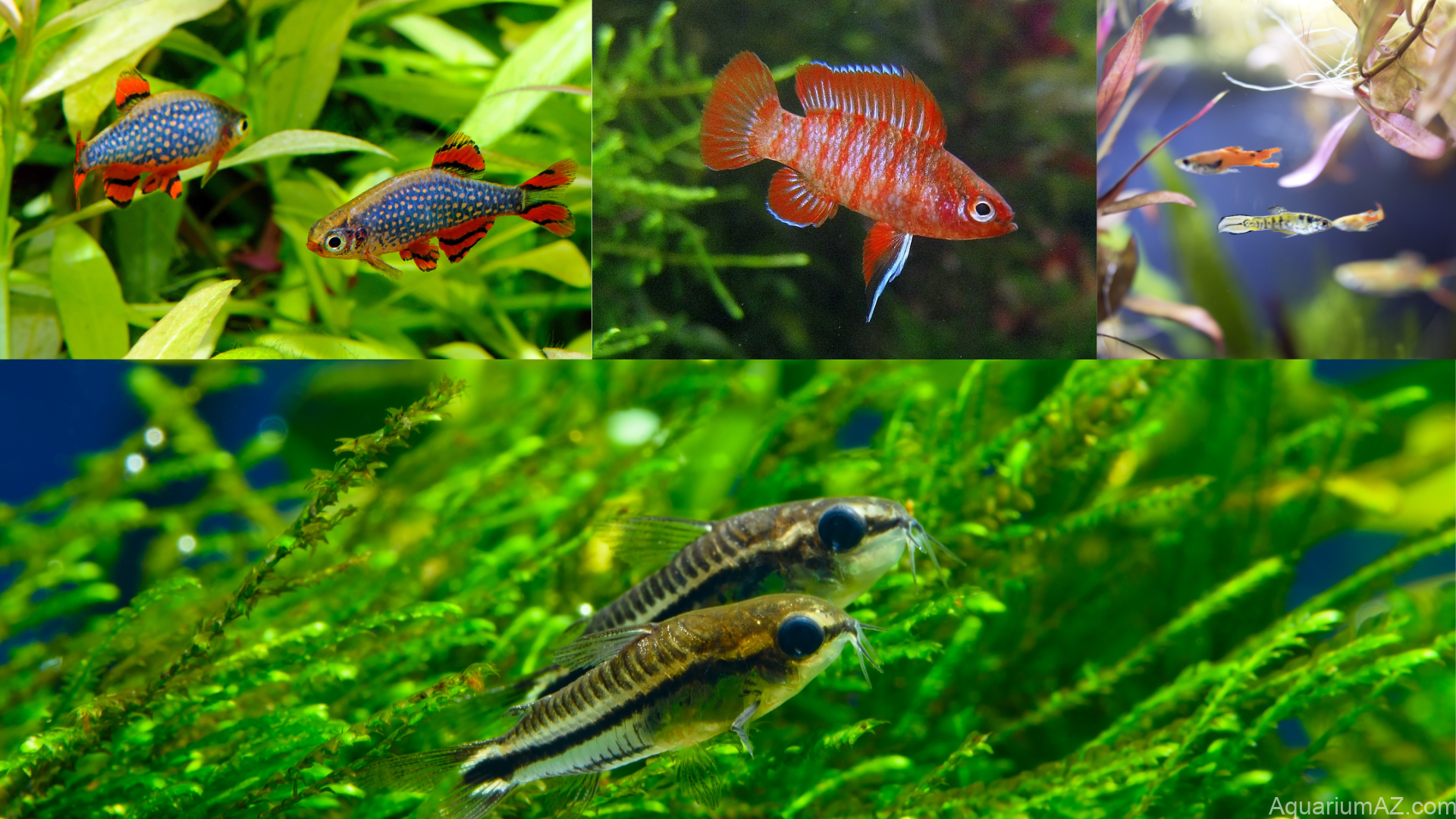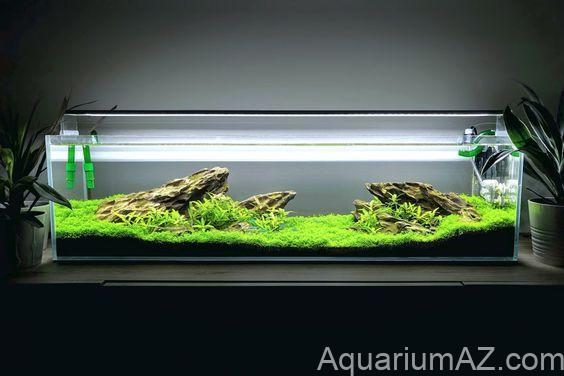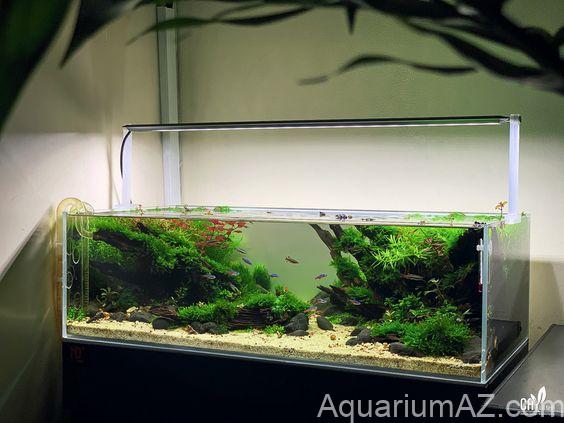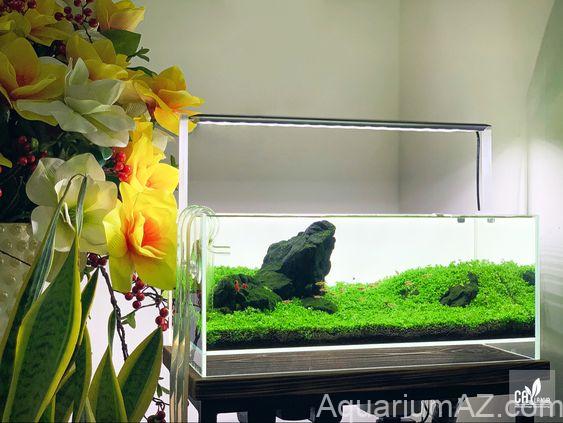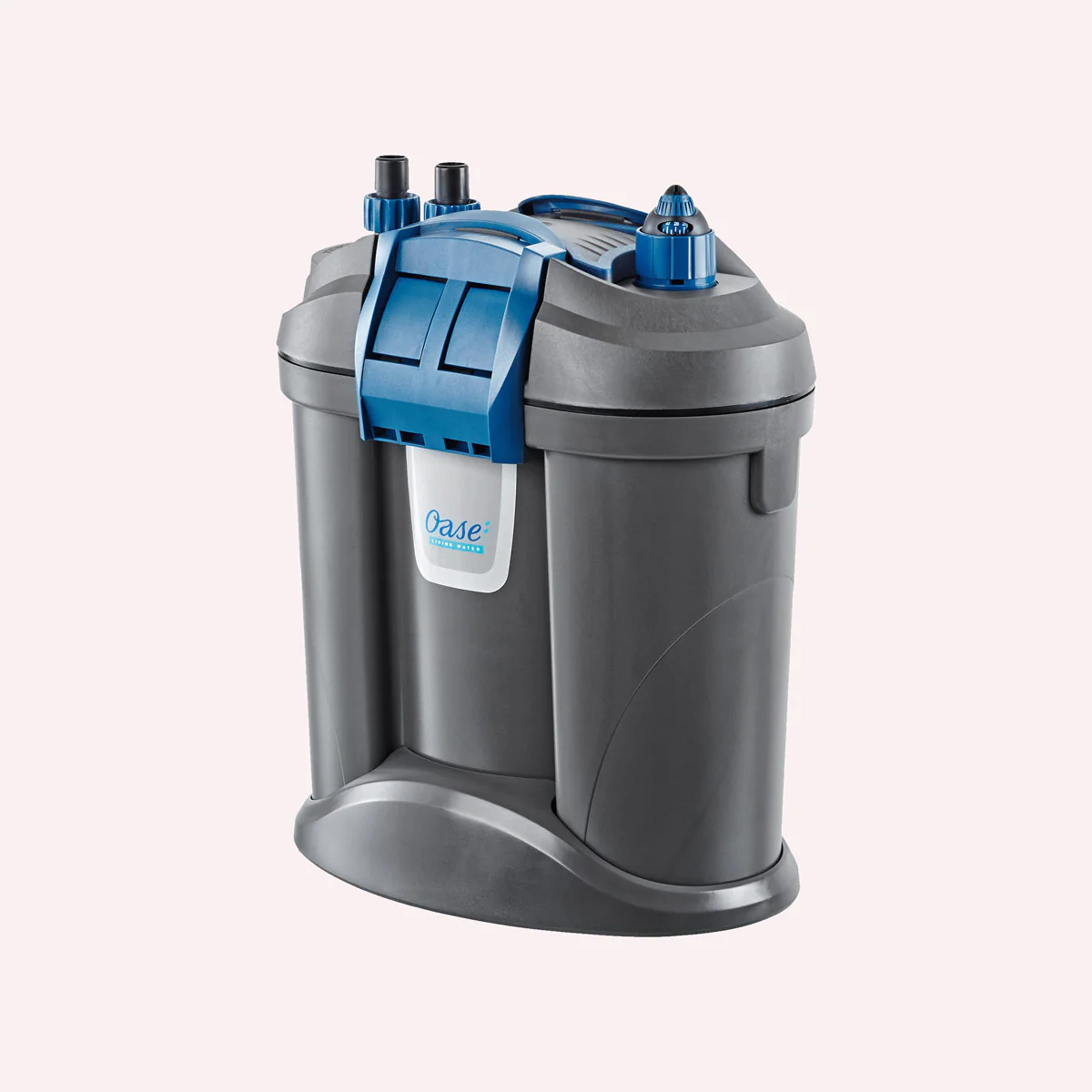Shallow Tank With Minimalistic Designs
Traditionally, aquariums have been designed with a greater height than front to rear depth, emphasizing the frontal view as the focal point. However, a new trend is emerging in the aquarium world – open-topped tanks with a deliberate shallow design. These tanks prioritize aquascaping by providing a larger front to rear depth, offering more space for creativity and visual appeal.
A prime example of this trend is a tank that stands at just 25cm/10″ in height, but boasts impressive dimensions of 40cm/16″ in width and 60cm/25″ in length. This specific size serves as the centerpiece of this article and is, by far, the most exceptional aquarium I have ever owned.
Why shallow?
A shallow aquarium offers new areas for creativity. Decorative materials such as wood, rocks and plants can be deliberately exposed above the water to add a world of new dimensions. Many aquarium plants are happy to grow above water and some also produce attractive flowers. If the aquarium is in a relatively low position the aquascape can be easily viewed from above, giving it a more natural pond/pool-like appearance.
Shallow aquariums are also easy to maintain. Using longer aquascaping tweezers and scissors I can perform simple pruning tasks without getting my hands wet! Because a shallow aquarium has a greater front to rear width it creates a larger surface area to promote oxygen.
However, the dimensions of such an aquarium render it unsuitable for deep-bodied fish. Water evaporation is quicker because of that large surface area and it increases with more surface agitation and higher water temperatures.
It’s best to top up losses with reverse osmosis filtered water, as this prevents mineral build-up in the aquarium.
Tank size and material
When it comes to setting up a shallow tank, choosing the right tank is crucial for the success of your aquatic ecosystem. Consider the following factors when selecting a tank:
Pros and cons of different tank materials
| Type |
Pros |
Cons |
| Glass |
1: Less Expensive
2: Easy to Clean
3: Scratch Resistant |
1: Quite Heavy
2: Less Durable than acrylic ones |
| Acrylic |
1: Pretty Durable
2: Weights 50% less than glass Aquariums
3: Available in a variety of Shapes |
1: Slightly Expensive
2: Gets Scratched Easily |
Glass tanks: Glass is a popular choice due to its clarity and scratch-resistant properties. It provides excellent visibility, allowing you to enjoy the beauty of your aquatic plants and fish. However, glass tanks can be heavy and more prone to breakage if mishandled.
Acrylic tanks: Acrylic tanks are lightweight and more durable than glass. They offer better insulation and are less likely to shatter. However, they may be more prone to scratches, requiring extra care during cleaning.
Ideal tank size and dimensions for a shallow tank
- Compact and Stylish: A 10-gallon shallow tank measuring 24″ in width, 12″ in depth, and 8″ in height. This size is perfect for creating a visually appealing, low-profile aquascape that fits well in smaller spaces.
- Balanced and Versatile: A 30-gallon shallow tank measuring 36″ in width, 18″ in depth, and 12″ in height. With a slightly larger front-to-rear depth, this tank provides more space for aquascaping creativity while maintaining a shallow profile.
- Spacious Centerpiece: A 50-gallon shallow tank measuring 48″ in width, 24″ in depth, and 10″ in height. This larger tank offers ample room for designing intricate aquascapes with a wide range of plants and fish species.
Equipment
For a successful shallow tank, it’s essential to have the right equipment and set it up properly. Consider the following aspects:
Filtration system
Canister filters or hang-on-back filters are commonly used in shallow tanks, providing effective mechanical, chemical, and biological filtration. The compact size of the filter allows for easy installation and maintenance in limited space. It provides efficient filtration, ensuring a clean and healthy environment for your aquatic life. The gentle water flow of a small canister filter is also beneficial for shallow tanks, preventing excessive water movement that may disturb delicate plants or inhabitants. With its reliable performance and space-saving design, a small canister filter is an ideal filtration solution for your shallow tank setup.
Lighting
Opt for appropriate lighting fixtures that promote healthy plant growth and enhance the visual appeal of your shallow tank. LED lights are energy-efficient and offer customizable options for intensity and color spectrum.
In a shallow tank, it’s important to consider the lighting requirements of the aquatic plants and inhabitants. Due to the shallower depth, the light penetrates the water more effectively, which means a lower light intensity is often needed to avoid overwhelming the plants or causing excessive algae growth. Choosing LED lights with adjustable brightness and color temperature allows for precise control, ensuring the perfect balance of light for the health and aesthetics of your shallow tank.
Fish Selection
When choosing fish for a shallow tank, it’s crucial to consider their specific needs and compatibility with a shallow water environment. Here are some factors to keep in mind:
Size and behavior
Opt for fish species that are suitable for the tank’s size and won’t outgrow the space. Additionally, consider their behavior—avoid aggressive or territorial species that may harm or stress other tank inhabitants.
Adaptability to shallow water
Some fish species are better suited for shallow tanks due to their natural habitat preferences. Look for species that thrive in shallow, slow-moving waters to ensure their comfort and well-being.
Water parameters
Check the water requirements of potential fish species and ensure they align with the parameters you can maintain in your shallow tank. Consider factors like temperature, pH level, and water hardness.
Compatibility
Take into account the compatibility of different fish species. Avoid combining species that have conflicting requirements or are known to have issues coexisting peacefully.
Schooling or solitary fish
Determine whether the fish species you’re interested in are schooling fish that require companionship or solitary species that prefer to be alone. Provide appropriate numbers of schooling fish to promote their well-being.
By carefully selecting fish species that are suitable for the tank size, adapt well to shallow water, align with water parameters, are compatible with other inhabitants, and meet their social needs, you can create a harmonious and thriving community in your shallow tank.
List of popular tropical fish species that are commonly kept in shallow tank:
- Pygmy Corydoras (Corydoras pygmaeus): These small, peaceful catfish are perfect for shallow tanks due to their small size and bottom-dwelling nature.
- Endler’s Livebearer (Poecilia wingei): These colorful and active fish thrive in shallow tanks and add vibrant pops of color to your aquarium.
- Celestial Pearl Danio (Danio margaritatus): Also known as Galaxy Rasbora, these tiny fish are captivating with their iridescent colors and are well-suited for shallow tanks.
- Scarlet Badis (Dario dario): These small, vibrant fish are excellent choices for shallow tanks as they prefer slow-moving water and can be kept in small groups.
- Dwarf Gourami (Trichogaster lalius): These peaceful and visually striking fish are a popular choice for shallow tanks, adding elegance and beauty to the aquarium.

